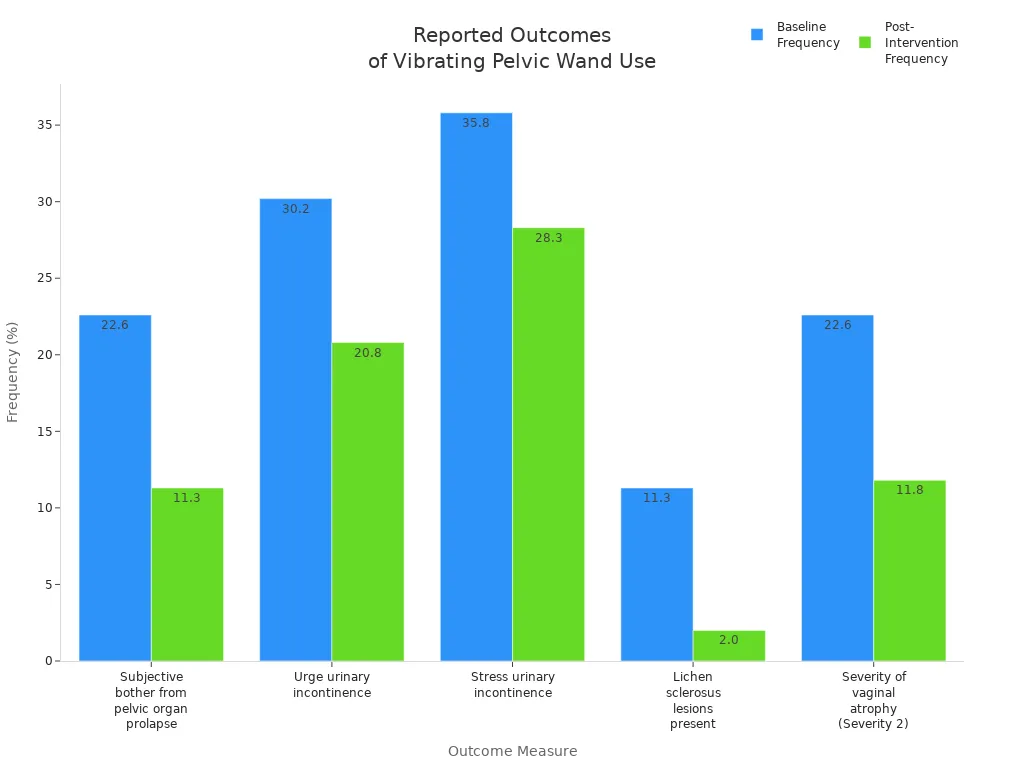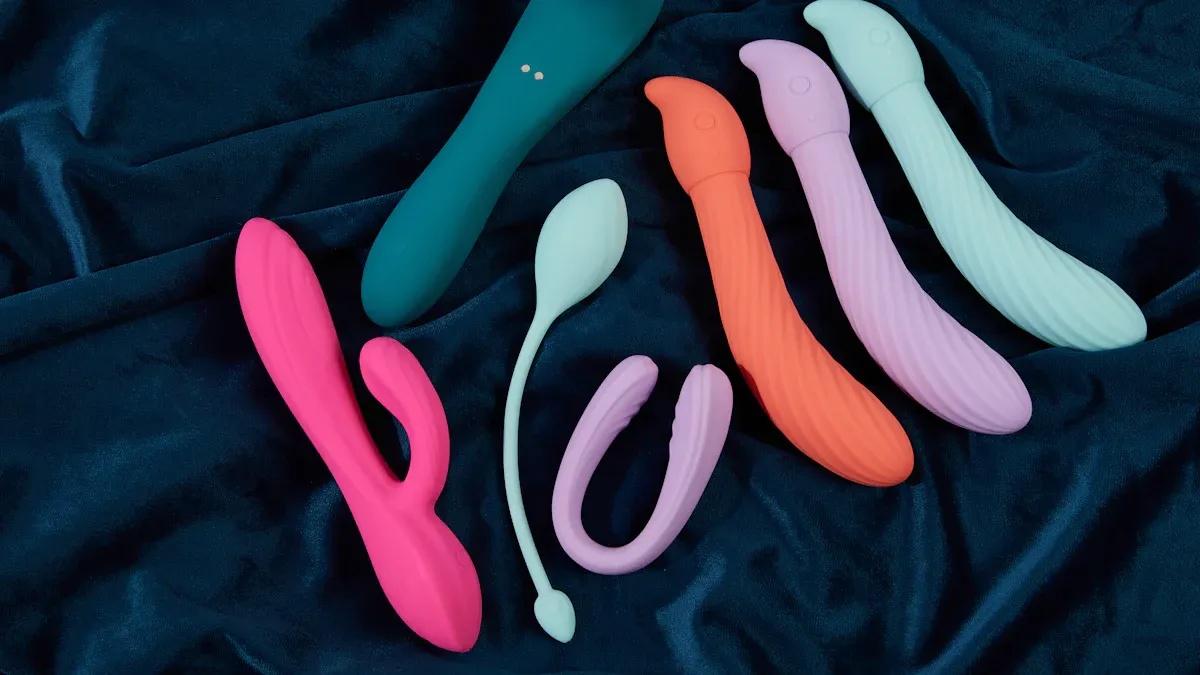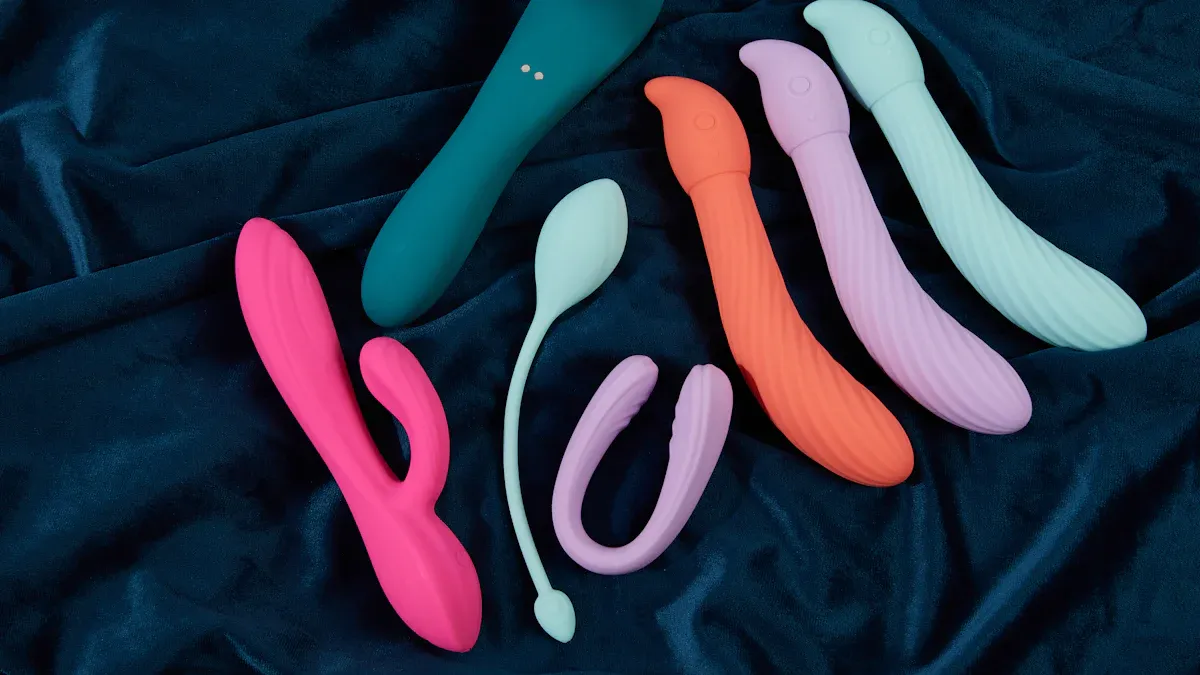How to Use a Vibrating Pelvic Wand for Effective Pelvic Pain Relief

If you have chronic pelvic pain, you are not alone. Many people use a vibrating pelvic wand for relief. Studies show vibration therapy helps with chronic pelvic pain. It does this by improving blood flow and relaxing pelvic muscles. This is a non-invasive way to help many pelvic pain problems. It works for pain caused by pelvic floor dysfunction too. You can use a vibrating pelvic wand at home with a step by step guide. You may have heard of tools like a vibrating wand or egg vibrater. Some people use the plusone dual vibrating massager as well. A vibrator penis is sometimes used for pleasure. Vibrating pelvic wands are made to help muscles and give relief.
Preparation

Clean the Wand and Hands
Before you start, always wash your hands with soap and water. This step keeps germs away from your pelvic area and helps protect your pelvic health. Clean your pelvic wand before and after each use. Use warm water and a mild, fragrance-free soap. Rinse the wand well so no soap stays on it. Dry it with a clean towel or let it air dry. Never use harsh chemicals or put the wand in the dishwasher. Store your pelvic wand in a clean, dry pouch to keep it safe.
Tip: Follow the cleaning instructions from the manufacturer to keep your pelvic wand in good shape.
Choose Water-Based Lubricant
Pick a water based lubricant every time you use your pelvic wand. Water based lubricant is gentle on your pelvic floor muscles and matches the natural pH of your body. Silicone or oil-based lubricants can harm the wand and may cause irritation. Look for a lubricant that is hypoallergenic and free from harsh chemicals. Using enough lubricant helps the pelvic wand glide smoothly and adds comfort, especially if your pelvic floor feels tight.
Water based lubricant keeps your pelvic health in check.
It protects both your pelvic wand and your pelvic floor muscles.
Find a Comfortable Position
Comfort is key when using a pelvic wand. Lie on your back on a soft bed. Open your knees outward and use pillows to support them. This position helps your pelvic floor muscles relax. You can also try an empty bathtub for extra back support. Make sure you feel safe and free from distractions. Adjust your position until you find what feels best for your pelvic health and comfort.
Relax and Breathe
Take a few deep breaths before you begin. Place your hands on your lower ribs and under your navel. Feel your belly rise and fall as you breathe. This helps your pelvic floor muscles let go of tension. Try gentle music or a short meditation to calm your mind. You can also massage the area between your vagina and anus to prepare your pelvic floor.
Remember: Relaxation helps your pelvic wand work better and makes the whole process more comfortable.
How to Use Pelvic Wand

Insert the Wand Safely
You want to start slow and gentle. First, pick the end of the pelvic wand that feels best for you. Some people like the wider end for deeper muscle relief, while others prefer the thinner end for easier insertion. Add a generous amount of water-based lubricant to the wand and your vaginal or rectal opening. This step helps protect your pelvic floor muscles and keeps your pelvic health in check.
Lie on your back with your knees bent and supported by pillows. Take a few deep breaths. When you feel ready, gently insert the pelvic wand. Always keep the curved side down if you use it vaginally. Move slowly and stop if you feel pain. You might feel a little pressure, but you should not feel sharp pain. If you do, pause and breathe.
Tip: Always avoid the 12 o’clock position (toward the urethra) to protect sensitive areas.
Locate Tender Points
Now, you can start to find the spots that need attention. Think of your vagina or rectum as a clock face. Sweep the pelvic wand from about 5 to 1 o’clock and 7 to 11 o’clock. Move slowly and pay attention to how your pelvic floor muscles feel. Tender points often feel like small knots or tight spots. You might notice a little discomfort or a dull ache when you touch these areas. That’s normal for myofascial trigger points.
If you want to make this easier, try using the vibration setting on your vibrating pelvic wand. Start with the lowest setting. This helps your pelvic floor relax and makes it easier to find those tight spots.
Note: Deep breathing helps your pelvic muscles let go of tension while you search for tender points.
Apply Gentle Pressure
Once you find a tender spot, hold the pelvic wand steady and apply gentle pressure. Imagine you are pressing on a ripe tomato—firm but not hard. Hold this pressure for about 45 to 60 seconds. You can repeat this on each spot 1 or 2 times a day. This gentle massage with pelvic wand helps release myofascial knots and brings targeted relief to your pelvic floor muscles.
Here’s a quick table to show what happens when you use gentle pressure and vibration:
What Happens | Why It Helps |
|---|---|
Muscle Relaxation | Vibration and pressure help tight pelvic floor muscles relax and improve blood flow. |
Pain Relief | The wand helps block pain signals and soothes myofascial pain. |
Better Tissue Health | Regular use supports strong, healthy pelvic tissues. |
At-Home Care | You get targeted relief without leaving home. |
Use Vibration Settings
Start with the lowest vibration setting on your vibrating pelvic wand. This is the best way to get used to the feeling and avoid discomfort. As you get more comfortable, you can try different vibration patterns or increase the intensity. Vibration helps your pelvic floor muscles relax, boosts blood flow, and makes pelvic therapeutic massage more effective. If you feel any discomfort, lower the setting or take a break.
Tip: Everyone’s body is different. Try different settings to find what brings you the most comfort and targeted relief.
Adjust Position as Needed
You might need to change your position to reach different pelvic floor muscles. Try lying on your side with a pillow between your knees or adjust your legs to open your hips more. Listen to your body. If you feel tension or discomfort, pause and breathe. You can also adjust the angle of the pelvic wand to reach deeper or shallower muscles. This flexibility helps you get the most out of your massage with pelvic wand and supports your pelvic health journey.
Remember, learning how to use pelvic wand takes practice. Stay patient and gentle with yourself. Over time, you’ll notice less pain, better pelvic function, and more confidence in your self-care routine.
Frequency and Relief
Session Length
When you first use a pelvic wand, keep sessions short. Most people use it for 5 to 10 minutes each time. You do not need to hurry. Move the wand gently and slowly. Short sessions help your pelvic muscles relax. This makes pain easier to manage. If you feel tired or sore, stop and rest. You can try again later if you want. Many people use the pelvic wand as part of their physical therapy for chronic pelvic pain.
How Often to Use
You might ask how often to use your pelvic wand. Experts say to start with daily sessions. Use the pelvic wand for 5 to 10 minutes each day. When you feel better, you can use it less often. Try using it three times a week to keep up the results. Some people only need one or two sessions per week when their pain is under control. This schedule works well with other pain management and physical therapy plans.
Tip: Pay attention to your body. If you feel more pain or discomfort, take a break and talk to your physical therapy provider.
Signs of Progress
You may notice changes as you keep using your pelvic wand. Many people feel less pelvic pain and more muscle relaxation. You might also feel more comfortable. Other symptoms can change too. Here is a table that shows what can happen before and after using a pelvic wand:
Outcome Measure | Before Use | After Use | Significant Change? |
|---|---|---|---|
Bother from pelvic organ prolapse | 22.6% | 11.3% | Yes |
Urge urinary incontinence | 30.2% | 20.8% | Trend |
Stress urinary incontinence | 35.8% | 28.3% | No |
Lichen sclerosus lesions | 11.3% | 2.0% | Yes |
Vaginal atrophy (Severity 2) | 22.6% | 11.8% | Yes |

You may also notice:
Less muscle tension in your pelvic area
Less discomfort from tight pelvic floor muscles
Better blood flow and more comfort
Lower stress and a better mood
Improved sexual experience
These changes show that using a pelvic wand often can help your physical therapy and pain management. Many people find their chronic pelvic pain gets easier to handle. You can use these signs to see your progress and change your routine for the best relief.
Safety Tips
When to Stop
You should always listen to your body when using a vibrating pelvic wand. If you feel pain or sharp discomfort, stop right away. Pain is your body’s way of telling you something is wrong. Never push through pain.
Some warning signs mean you need to stop immediately:
Burning or stinging during use
Blood in your urine
Cloudy or strong-smelling urine
Sudden pelvic pressure or lower back pain
Trouble urinating or feeling like you cannot empty your bladder
If you notice any of these symptoms, put the wand down and take a break. Your safety comes first.
When to Seek Help
Sometimes, you may need extra support. If you keep feeling pain or discomfort after stopping, reach out to a healthcare provider. You should also talk to a professional if you notice signs of infection, like fever, chills, or unusual discharge.
It’s smart to check with a pelvic floor therapist or doctor before you start using a pelvic wand, especially if you have a history of pelvic pain or muscle tension. They can help you find the safest way to use your wand and answer your questions.
Don’t wait if you feel unsure or worried. Getting help early can prevent bigger problems.
General Precautions
You can lower your risk of problems by following a few simple rules:
Wash your wand with warm water and mild soap before and after each use.
Always use a water-based lubricant to protect your skin and the wand.
Insert the wand slowly and gently. Use deep breathing to help your muscles relax.
Press only as hard as you would on a ripe tomato. Never use force.
Limit sessions to about 10 minutes, two or three times a week.
Choose a quiet, private place where you can relax.
Stay alert for any signs of infection or irritation.
Use a wand made from medical-grade silicone for safety.
Taking these steps helps you get the most relief while keeping your pelvic health safe. Remember, slow and gentle is always best!
Support and Resources
Self-Care Tips
You can make pelvic wand therapy work better with good self-care. Taking care of your pelvic health at home helps each session. Here are some easy self-care tips to follow:
Talk to a healthcare provider before you begin. This makes sure the therapy is right for you.
Wash your pelvic wand before and after you use it. Clean tools help keep your pelvic floor muscles safe from infection.
Always use a water-based lubricant. This keeps your pelvic floor comfortable and helps the wand move easily.
Start with gentle pressure. Try to relax your pelvic floor muscles by taking deep breaths.
Hold gentle pressure on tight spots for 1 to 3 minutes, or as your physical therapy provider tells you.
You can also do pelvic floor exercises as part of your self-care. These moves help blood flow, relax muscles, and support your pelvic health. Many people get better results by using the wand and doing physical therapy together.
Remember: Doing your self-care routine often helps you feel better and makes your pelvic floor muscles stronger.
Professional Guidance
You do not have to handle pelvic pain by yourself. There are many kinds of professional help for your pelvic health:
Pelvic health specialists can teach you how to use the wand safely.
Healthcare providers help you make a treatment plan that fits you.
Pelvic floor physical therapists show you how to relax your pelvic floor muscles and use the wand the right way.
Counselors and therapists can help if pelvic pain makes you feel sad or worried.
Support groups and online communities let you share your story and learn from others.
Many brands have video guides and step-by-step instructions for safe wand use.
If your symptoms do not get better after four weeks, or if they get worse, talk to a doctor or pelvic floor specialist.
You can also find product bundles, private online groups, and expert videos to help you feel sure about your self-care. Working with professionals and using trusted resources gives you the best chance for lasting pelvic health and comfort.
You can get real pain relief by using a vibrating pelvic wand the right way. Start slow, use gentle pressure, and keep your wand clean. Make this part of your self-care routine to improve quality of life. Always listen to your body and talk to a pelvic health specialist if you need help.
You have the power to find relief and feel better every day.





